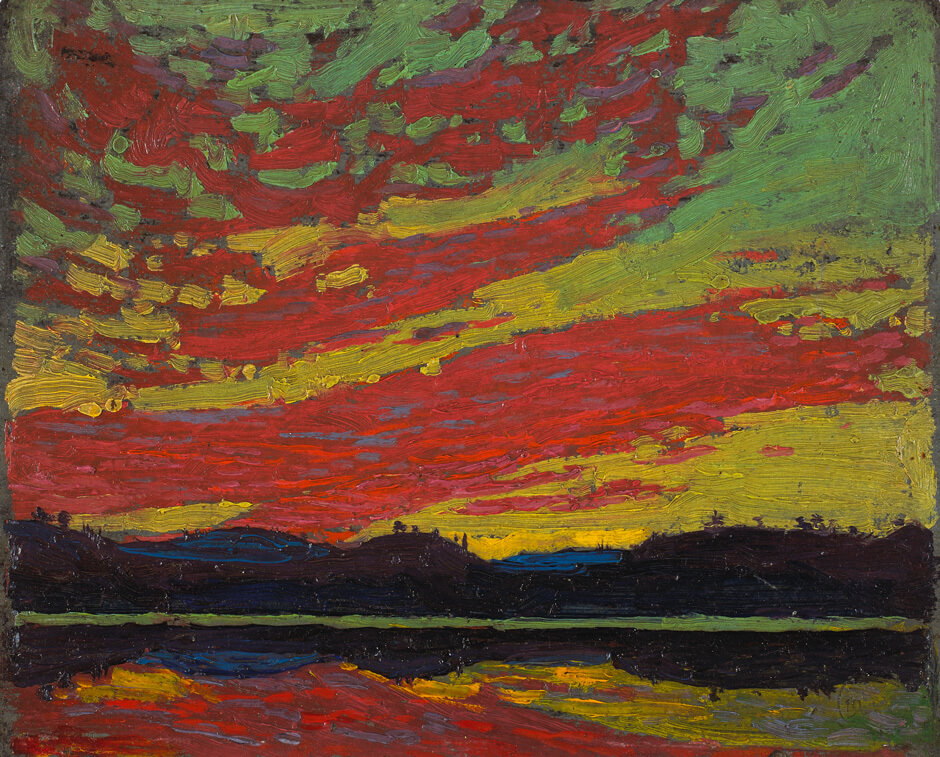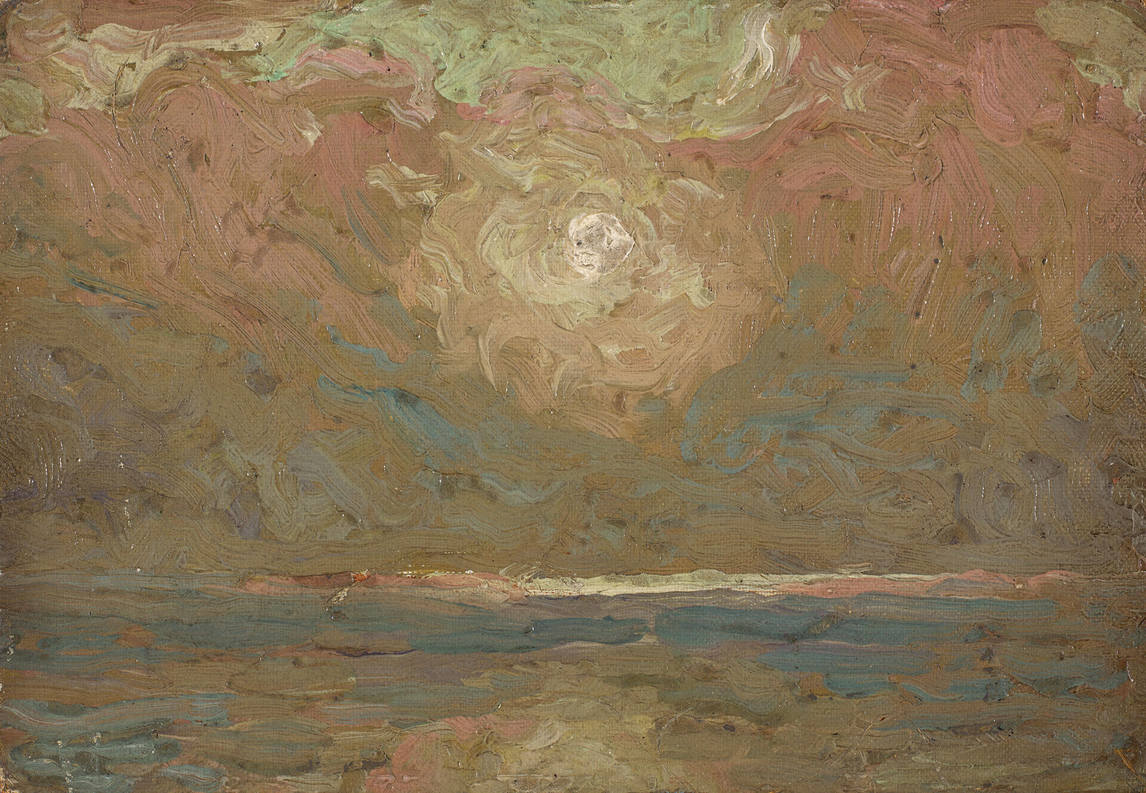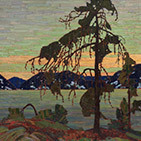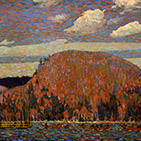Sunset 1915

Tom Thomson, Sunset, 1915
Oil on composite wood-pulp board, 21.6 x 26.7 cm
National Gallery of Canada, Ottawa
Thomson sketched this scene from a canoe, almost at water level, with the universe wrapped around him. He portrays the sunset in shocking hues and agitated brushwork, with a blazing reflection in the lake that doubles its allure, magic, and power. He paints not just crimson clouds but an acid yellow-and-green sky behind them. His constant preoccupation with skies, clouds, and sunsets reached a peak with this painting as he entered the most productive and accomplished period of his short career (1915–17). With this small image, he takes liberties and soars above mere documentation, capturing the brilliance, drama, and fleeting nature of a sunset in Algonquin Park.

The shoreline slices across the painting at a point close to the “golden section,” creating a pleasant ratio of expansive sky to the dark land beneath. After his first summer in Algonquin Park, in 1913 Thomson used this pattern in numerous paintings—a narrow foreground band of water, a distant shoreline, and an overarching sky. He repeated it in some of the other sunset paintings he created, though always with variations. Sunset Sky, 1915, which is quite different in effect and colour, is close to this painting in composition—both the sky and the distant shore are reflected in the lake’s surface, with the dark shore carving two parallel tracks across the lower part of the panel. Sunset, also 1915, is much more abstract and loosely painted, though it has the same low point of view and the same emphasis on the clouds.
Thomson was enthralled by clouds in all their variety—clouds in stormy weather, puffy clouds on bright summer days, clouds bringing rain or snow, or clouds, as in Sunset, setting the sky on fire. The blood-soaked sunsets painted by the Norwegian artist Edvard Munch (1863–1944) had startled the world in the mid-1880s after Krakatoa, in 1883, blew tons of volcanic ash into the atmosphere to produce sunsets never seen before. Nature gave Thomson similar assistance in 1915 after the volcanic eruption of California’s Lassen Peak in May that year—the “Great Explosion”—caused spectacular sunsets in the northern hemisphere.

 About the Author
About the Author
 More Online Art Books
More Online Art Books
 Acknowledgements
Acknowledgements